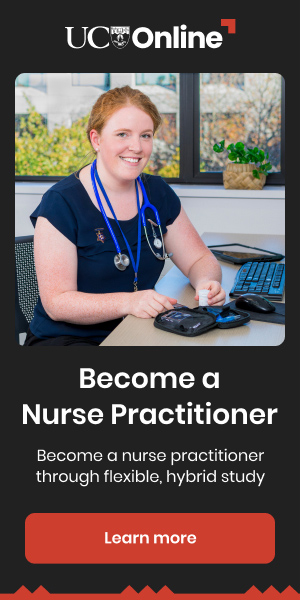A hierarchy exists among health-care professionals in health institutions such as hospitals.1 Student nurses undertaking bachelor of nursing programmes learn to navigate this hierarchy while on clinical placement.
Hierarchy is defined as a system within a society or organisation where people are organised into different levels of importance, from highest to lowest.2 In this article, hierarchy refers to the power structure in the health system with doctors at the top, followed by RNs, and then student nurses and health-care assistants (HCAs).
This structure is based on the division of health-care staff into separate professions, each with their own professional boundaries and fields of practice, which affects how health-care labour is divided.3
Although student nurses may seem to have less power within this structure, they do contribute to the work of the institution by reducing heavy workloads for other staff, helping integrate newly learned evidence-based practice into care, and bringing fresh innovative perspectives to the workplace.4
Students contribute to the work of the institution by reducing workloads for other staff, helping integrate newly learned evidence-based practice into care, and bringing fresh perspectives to the workplace.
In this article, five student nurses reflect on their experiences of hospital hierarchy during their first clinical placement as second-year students last year.5 Reflection helps develop the clinical competence of student nurses and is an important learning tool.6
We discuss issues associated with hierarchy in the hospital, including leadership, working in a time-constrained setting, self-advocacy and mentorship. Ways to manage the hierarchy will be explored, including effective communication, team briefings, the acronym PACE and interprofessional education.
Hierarchy in hospitals
Hospital systems are embedded in hierarchical structures where those with the most experience often have the most authority.1 Student nurses are considered unregulated health-care personnel because they are yet to attain the qualifications required to work independently; however they should have hands-on experiences that align with their education.7

During our first clinical placement, we had our first experience of working under the supervision of clinical preceptors. In our experience, when we reported that we wanted to independently perform tasks under the supervision of the preceptor, they often got impatient, lacked trust or wanted to do it themselves “their way”.
We often felt we were not given the opportunity to try things because we were “just a student”. We felt that some preceptors underestimated our abilities and did not include us in care because the preceptor “knew best”.
We often felt that our learning opportunities were taken away and that we were burdens to the preceptors. This led to us withdrawing and becoming less likely to advocate for ourselves. However, while we felt powerless at the start of our placement, over time we did begin to feel more supported and recognised as part of the health-care team.
Benefits of hierarchy
Despite some issues, we did clearly note benefits of hospital hierarchy. For example, when an emergency code was called, the many health-care workers that converged had a wide range of skills. When there are time constraints, a hierarchy allows for the most appropriately skilled people to do their job as quickly as possible.8
If there is a sense of trust in the relationship, then students feel safe asking questions and practising their nursing skills.
Many of us felt that our RN preceptors had a positive impact through their teaching and modelling of patient-centred care.
Good relationships across hierarchies in the hospital setting can help the student nurse develop skills and knowledge.9 If there is a sense of trust in the relationship, then students feel safe asking questions and practising their nursing skills.
Good leadership
An essential aspect of the hierarchy in health care is the quality of leadership on the part of those with more authority and experience.1 Effective management and leadership by health-care professionals enhances the quality of patient care.8
Good leadership creates daily organisation and structure in the health-care setting and ensures that health-care staff know their responsibilities, and those of their colleagues.
The health-care system is often new and challenging to student nurses, so having a good leader or nursing preceptor can help ease student anxiety. Good leadership can create positive learning experiences for students, enabling them to feel like they are part of the team and can make decisions.

Struggling with self-advocacy
However, the hospital hierarchy may lead to students struggling with self-advocacy.11 Research has shown that a common adverse effect of seniority-based hierarchy is a decrease in junior nurses’ willingness to speak up.11,12
When student nurses come into placements, they aim to apply the clinical skills they have learnt in their education programme. However, they often hold back, in fear of being wrong or being reprimanded by those higher up in the hierarchy.
Many students do not have the courage to intervene when they witness poor practice by other health professionals because of a desire to “fit in” with the group.11 It is important that student nurses feel comfortable asking questions in order to apply newly learnt skills appropriately.
Our experience was that our higher-ranked preceptors often disregarded our voices and opinions.
Many preceptors are often feeling stressed and burnt out due to demanding workloads.13 Their willingness to take time to teach students may be affected and students may feel like they are a nuisance if they ask questions.
Actions and recommendations
Effective communication is crucial. “Whistle-blowing” in the clinical setting refers to the responsibility of each member of the health-care team to confront any power imbalance or over-dominating senior colleagues.14 Our experience was that our higher-ranked preceptors often disregarded our voices and opinions. Therefore, we felt unsafe and needed to be supported and encouraged to speak up.
Daily team briefings helped us to feel comfortable and gave us an opportunity to raise concerns. These team briefings began with personal introductions and a discussion about feeling safe to speak up if we had concerns, without fear of retribution. The meetings helped remind those in higher positions in the hierarchy to listen to and respect others who are lower down.
Hierarchical barriers and the fear of negative reactions from those with higher status are the most common reasons health-care professionals do not speak up.15 The acronym “PACE” is a technique to manage this fear of being challenged. “Probe, Alert, Challenge, Emergency” provides a structured way for those of lower hierarchy, such as student nurses, to effectively communicate their concerns and approach challenging situations.14
Daily team briefings helped us to feel comfortable and gave us an opportunity to raise concerns.
For example, if a student wanted to escalate concern about a patient with worsening vital signs, PACE enables them to do this in a systematic and non-confrontational manner. This information is then likely to be received more positively by those higher in the hierarchical structure.14
Managing the hierarchy through effective communication can also be achieved through interprofessional education (IPE), which involves learning to understand the duties and responsibilities of other health professions.16 IPE positively affects students on placement as they can better understand, and therefore communicate effectively with, all members of the health-care team.
Flat hierarchy
To make it easier to communicate within the hierarchy, one group of researchers has recommended that hospitals adopt a flat, instead of steep, hierarchical gradient.14 A flat hierarchy means each health profession, including doctors and RNs, is equally valued for its different skills and knowledge.
We, as second-year nursing students, found that team briefings created a democratic environment where RNs, student nurses, medical students, physiotherapists, social workers and doctors learned more about each other’s professions. They allowed everyone to contribute equally to the planning of patient care. The briefings were a safe and respectful environment that allowed every member to have an input into the conversation.
Student nurses are the future of the nursing profession and an invaluable asset to the health-care system, and their contributions deserve to be listened to.4 It is imperative to empower them with the tools to manage existing hospital hierarchies to support their transition to practice. There is no such thing as “just” a student nurse.
Korine Dion Rosario, Jessica McCall Conover, Brianna Campbell, Alyssa Lynch and Angel Owen Legano are third-year nursing students, and Willoughby Moloney, RN, PhD, is a nursing lecturer at the University of Auckland.
* This article was reviewed by Louise Rummel, RN, PhD, principal lecturer, academic/research, in the School of Nursing, Manukau Institute of Technology (MIT), Auckland.
References
- Fernandopulle, N. (2021). To what extent does hierarchical leadership affect health care outcomes? Medical Journal of The Islamic Republic of Iran.
- Oxford University Press. (2022). Definition of hierarchy (noun). Oxford Learner’s Dictionaries.
- Goldman, J., & Xyrichis, A. (2020). Interprofessional working during the COVID-19 pandemic: sociological insights. Journal of Interprofessional Care, 34(5), 580-582.
- Fernández-Feito, A., García-Cueto, E., Díaz-Alonso, J., Valcárcel-Álvarez, Y., Parás-Bravo, P., Andina-Díaz, E., & Lana, A. (2021). Contribution of students to nursing practice settings during clinical training: Design and validation of a questionnaire. Journal of Advanced Nursing, 77(9), 3940-3951.
- Gibbs, G. (1988). Learning by doing: A guide to teaching and learning methods. Further Educational Unit, London.
- Matthews, E. (2004). Concordance with pain medication: reflection on an adverse incident. British Journal of Nursing, 13(9), 551-555.
- Canterbury District Health Board. (2017). Roles and Responsibilities Policy.
- Sfantou, D., Laliotis, A., Patelarou, A., Sifaki-Pistolla, D., Matalliotakis, M., & Patelarou, E. (2017). Importance of leadership style towards quality of care measures in healthcare settings: A systematic review. Healthcare, 5(4), 73.
- Thomson, K., Outram, S., Gilligan, C., & Levett-Jones, T. (2015). Interprofessional experiences of recent healthcare graduates: A social psychology perspective on the barriers to effective communication, teamwork, and patient-centred care. Journal of Interprofessional Care, 29(6), 634-640.
- Barry, D., Houghton, T., & Warburton, T. (2016). Supporting students in practice: leadership. Nursing Standard, 31(4), 46.
- Ewertsson, M., Bagga-Gupta, S., Allvin, R., & Blomberg, K. (2017). Tensions in learning professional identities – nursing students’ narratives and participation in practical skills during their clinical practice: an ethnographic study. BMC Nursing, 16(48).
- Lee, S. E., Choi, J., Lee, H., Sang, S., Lee, H., & Hong, H.C. (2021). Factors influencing nurses’ willingness to speak up regarding patient safety in East Asia: A systematic review. Risk Management and Healthcare Policy, 14, 1053-1063. doi: 10.2147/RMHP.S297349.
- Ross J. (2020). The exacerbation of burnout during COVID-19: a major concern for nurse safety. Journal of PeriAnesthesia Nursing: Official Journal of the American Society of PeriAnesthesia Nurses, 35(4), 439-440.
- Green, B., Oeppen, R., Smith, D., Brennan, P. (2017). Challenging hierarchy in healthcare teams – ways to flatten gradients to improve teamwork and patient care. British Journal of Oral and Maxillofacial Surgery, 55(5), 449-453.
- Weiss, M., Kolbe, M., Grote, G., Spahn, D., & Grande, B. (2016). Why didn’t you say something? Effects of after-event reviews on voice behaviour and hierarchy beliefs in multi-professional action teams. European Journal of Work and Organizational Psychology, 26(1), 66-80.
- Homever, S., Hoffman, W., Hingst, P., Oppermann, R., & Dreier-Wolfgramm, A. (2018). Effects of interprofessional education for medical and nursing students: enablers, barriers and expectations for optimizing future interprofessional collaboration – a qualitative study. BMC Nursing, 17(1).



